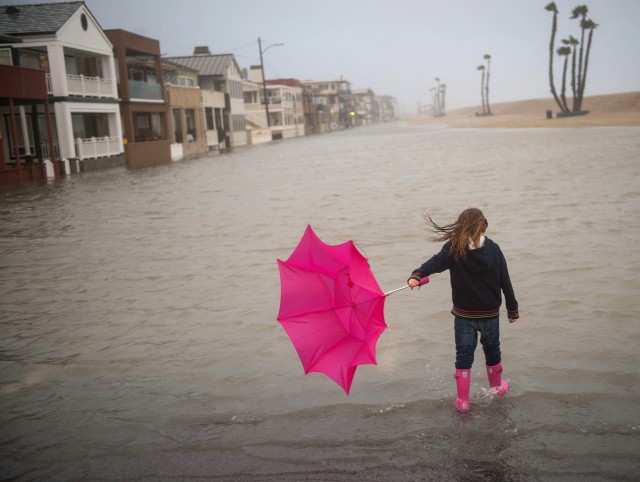The mixed blessing of California’s unusually wet winter is expected to play out this spring, with slightly increased flood risks in a state that has been declared drought-free for the first time in three years, according to US government forecasters on Thursday.
The higher odds of minor to moderate flooding across most of California from rain and runoff of melting mountain snow this spring is roughly in line with forecasts for much of the U.S., according to the National Oceanic and Atmospheric Administration (NOAA).
It also illustrates a dramatic swing in weather conditions for a state that has been preoccupied with drought, heat and wildfires for much of the past three years.
“Climate change is driving both wet and dry extremes,” NOAA Administrator Rick Spinrad said in a statement.
The agency’s spring outlook shows 44% of the U.S. as a whole faces a greater-than-50% chance of flooding in April, May and June, mostly east of the Mississippi River and the bulk of it classified as minor, meaning with little or no serious property damage likely.
“We’re not calling for catastrophic and major widespread flooding,” said Ed Clark, director of NOAA’s National Water Center.
Still, NOAA projects that 6.4 million people are at risk of “moderate flooding,” defined as when some structures and roads near overflowing streams end up under water, with scattered evacuations to higher ground.
A large zone over central California and eastern Nevada accounts for most of that moderate flood risk, along with smaller scattered regions across the upper Midwest, NOAA said.
A comparatively small region, and home to some 1.4 million people, along the upper Mississippi from Minneapolis south to the Iowa-Missouri border faces a higher probability of major flooding, a catastrophic event in which inundation of buildings and roads is extensive and evacuations are widespread, NOAA concluded.
It was that level of extreme flooding that devastated an entire community of migrant farm workers last weekend when a levee failed along the Pajaro River in Monterey, California.
California’s winter was marked by a punishing succession of so-called atmospheric river storms, the product of vast, dense airborne currents of water vapor funneled in from the tropical Pacific.
The storms have unleashed widespread flooding, mudslides, power outages, fallen trees, surf damage, road wash-outs and evacuations since late December. More than 20 deaths statewide have been attributed to the onslaught.
But those storms also replenished California’s sorely depleted network of reservoirs and its Sierra Nevada mountain snowpack, a critical source of water for the state.
“Winter precipitation, combined with recent storms, wiped out exceptional and extreme drought in California for the first time since 2020, and is expected to further improve drought conditions this spring,” NOAA said











Leave a Reply